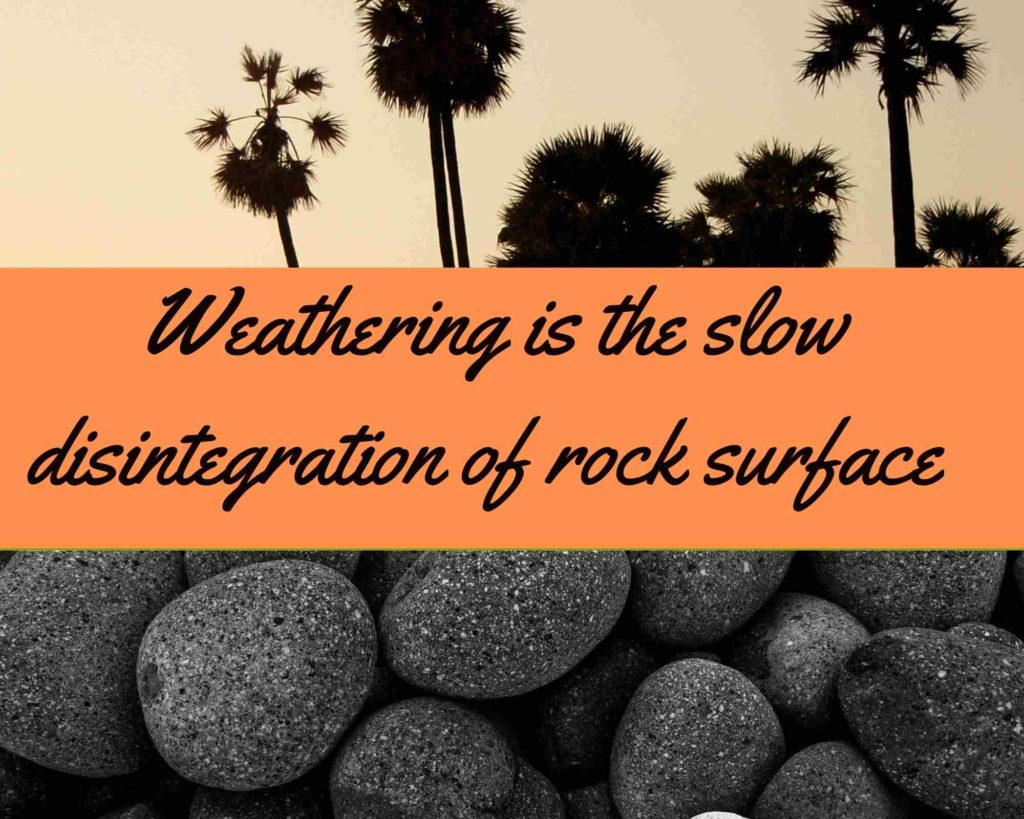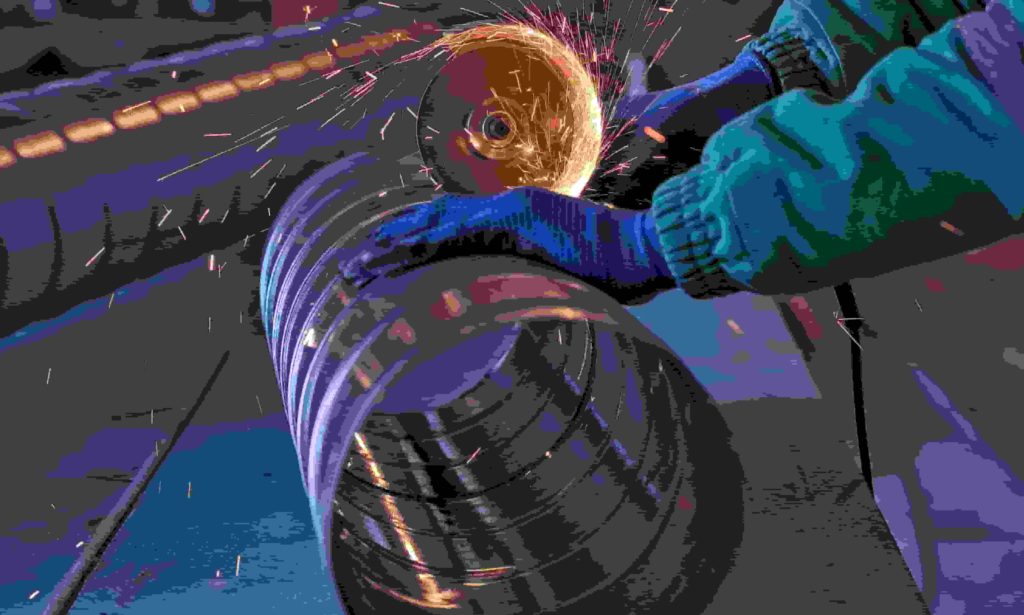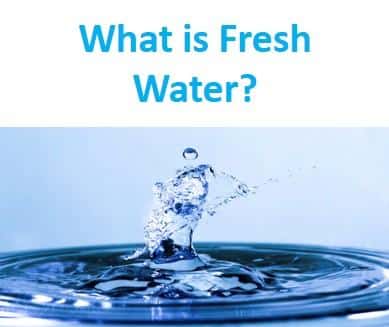Weathering is the slow disintegration of rock near the surface by dissolving, wearing away, or breaking it down into progressively smaller pieces.

These biological weathering forces might be mechanical, chemical, or a mix of the two. Mechanical weathering refers to physical processes, whereas chemical weathering refers to chemical activities. Living creatures’ activities, or organic weathering, are also considered by certain geologists.
Table of Contents
What is Weathering?
Weathering can result in anything from a color change to the total breakdown of minerals into clay and other surface minerals. It forms deposits of changed and loosened material known as residue, which is ready to be transported and eroded as it moves over the earth’s surface when driven by water, wind, ice, or gravity. Weathering and transportation are both involved in erosion. Weathering is required for erosion, although a rock can weather without being eroded.
- Changese in temperature
- Water (Rapidly flowing water can raise rocks from the stream bottom for brief periods of time)
- Salt (Saltwater sometimes gets into the cracks and pores of rock)
- Acids (A chemical reaction occurs when acidic rainfall falls on limestone or chalk)
- plants (Plant roots can grow in cracks)
- Animals (Animals can walk on or disrupt the rock, creating landslides that scrape or smooth the rock surface)
Mechanical Weathering
Mechanical weathering is comprised of five primary processes that physically break down rocks into silt or particles: abrasion, ice crystallization, thermal fracture, hydration cracking, and exfoliation.
Abrasion, ice crystallization, thermal fracture, hydration cracking, and exfoliation are the five major processes that physically break down rocks into silt or particles.
Mechanical weathering has an impact on more than simply the planet. Some brick and stone constructions may also be affected over time.
Chemical Weathering
The breakdown or deterioration of rock is referred to as chemical weathering. This form of weathering does not break down rocks but rather changes their chemical composition by carbonation, hydration, oxidation, or hydrolysis. Chemical weathering alters the composition of the rock toward surface minerals, primarily affecting minerals that were previously unstable. Water, for example, can ultimately dissolve limestone. Chemical weathering is a type of chemical erosion that may occur in sedimentary and metamorphic rocks.
Organic Weathering
Organic weathering is also known as bio-weathering and biological weathering. It involves elements such as animal interaction (when they dig in the ground) and plant contact (when their developing roots come into touch with rock). Plant acids can also help with rock disintegration.
Organic weathering is not a stand-alone process. It is the result of a mix of mechanical and chemical weathering processes.
More Interesting Topics
How Many Water Bottles is a Gallon| Examples
Mass Vs Weight| 5 Easy Examples
Diffusion Coefficient| Mass Diffusivity
Power Units- The Basics
Light Energy| 5- Easy Examples
Hydrogen Bond| Definition & Easy Explanation
- BCl3 Lewis Structure in four simple steps - November 1, 2023
- PH3 Lewis Structure in four simple steps - October 8, 2023
- PF3 Lewis structure in four simple steps - September 24, 2023



